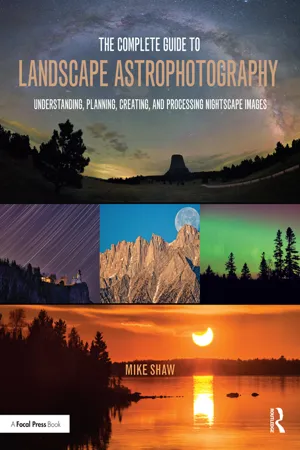
The Complete Guide to Landscape Astrophotography
Understanding, Planning, Creating, and Processing Nightscape Images
- 444 pages
- English
- ePUB (mobile friendly)
- Available on iOS & Android
The Complete Guide to Landscape Astrophotography
Understanding, Planning, Creating, and Processing Nightscape Images
About this book
The Complete Guide to Landscape Astrophotography is the ultimate manual for anyone looking to create spectacular landscape astrophotography images. By explaining the science of landscape astrophotography in clear and straightforward language, it provides insights into phenomena such as the appearance or absence of the Milky Way, the moon, and constellations. This unique approach, which combines the underlying scientific principles of astronomy with those of photography, will help deepen your understanding and give you the tools you need to fulfil your artistic vision.
Key features include:
• Distinguished Guest Gallery of images from renowned nightscape photographers such as Babak Tafreshi, Bryan Peterson, Alan Dyer, Brenda Tharp, Royce Bair, Wally Pacholka, and David Kingham
• The twenty-five best landscape astrophotography subjects and how to photograph them
• Astronomy 101 - build your knowledge of night sky objects and their motion: the Milky Way, moon, Aurora Borealis/Australis, constellations, meteors and comets
• Information on state-of-the-art planning software and apps designed to enable you to capture and enhance your landscape astrophotography
• Field guide for creating a detailed plan for your night shoot
• Description of the best moon phases for specific types of nightscape images, and the best months and times of night to see the Milky Way
• How-to guide for creating stunning time-lapse videos of the night sky, including Holy Grail transitions from pre-sunset to complete darkness
• Four detailed case studies on creating landscape astrophotography images of the Milky Way, full moon, star trails, and constellations
Frequently asked questions
- Essential is ideal for learners and professionals who enjoy exploring a wide range of subjects. Access the Essential Library with 800,000+ trusted titles and best-sellers across business, personal growth, and the humanities. Includes unlimited reading time and Standard Read Aloud voice.
- Complete: Perfect for advanced learners and researchers needing full, unrestricted access. Unlock 1.4M+ books across hundreds of subjects, including academic and specialized titles. The Complete Plan also includes advanced features like Premium Read Aloud and Research Assistant.
Please note we cannot support devices running on iOS 13 and Android 7 or earlier. Learn more about using the app.
Information
Section IV
Planning Successful Landscape Astrophotography Images
Section IV Introduction
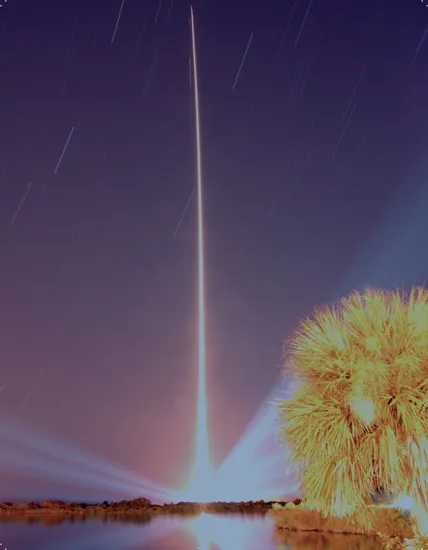
15
The 25 Best Landscape Astrophotography Targets
Alpenglow
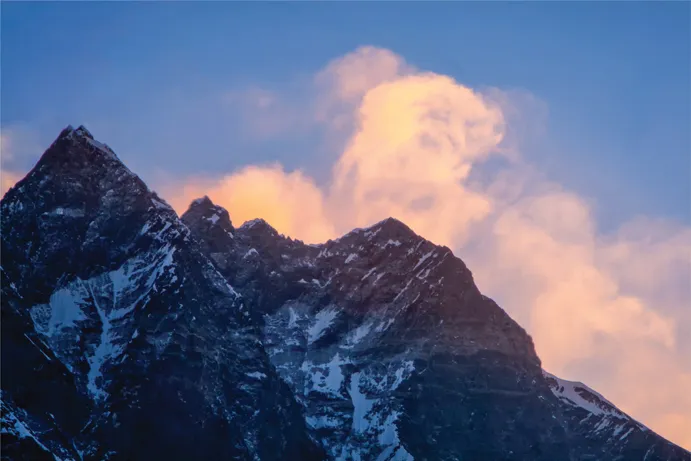
| LENS (MM) | All | START | Early civil twilight |
| ISO | Low: 100–500 | END | Mid- to late civil twilight |
| APERTURE | Sharpest (minimum + 2 stops) | NO. IMAGES | Variable |
| SHUTTER (SEC) | Adjust as needed | COMMENT | Alpenglow fades rapidly—act quickly |
Aurora Borealis/Australis
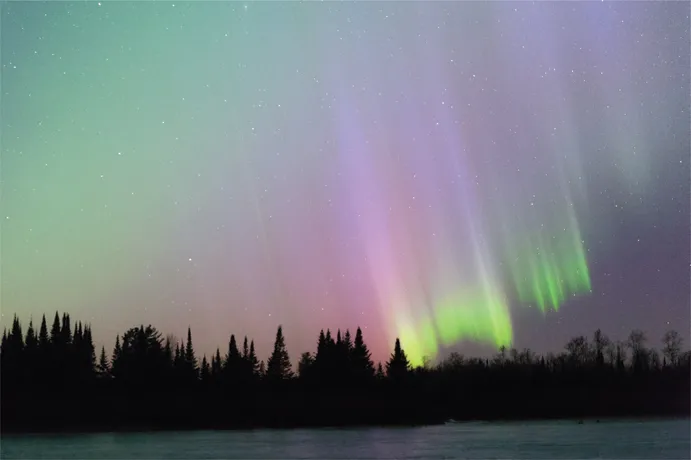
| LENS (MM) | Fisheye, 14–50 | START | Late astronomical twilight to full darkness |
| ISO | 1600–12800 | END | Early astronomical twilight (pre-dawn) |
| APERTURE | Minimum–sharpest | NO. IMAGES | Variable |
| SHUTTER (SEC) | Adjust as needed | COMMENT | Keep shutter speed low to retain structure |
Belt of Venus
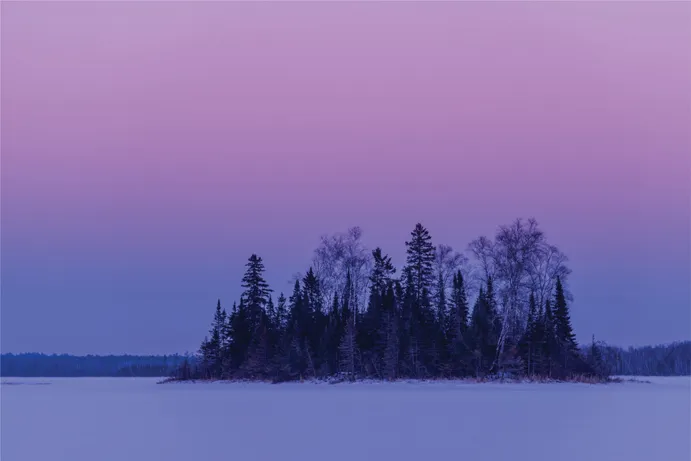
Table of contents
- Cover
- Title
- CONTENTS
- Copyright
- Foreword
- Preface
- Acknowledgments
- Dedication
- SECTION I WHAT IS LANDSCAPE ASTROPHOTOGRAPHY AND WHY NOW?
- SECTION II UNDERSTANDING ASTRONOMY AND ATMOSPHERIC SCIENCE FOR NIGHTSCAPE IMAGES
- SECTION III UNDERSTANDING PHOTOGRAPHY FOR LANDSCAPE ASTROPHOTOGRAPHY IMAGES
- SECTION IV PLANNING SUCCESSFUL LANDSCAPE ASTROPHOTOGRAPHY IMAGES
- SECTION V CREATING LANDSCAPE ASTROPHOTOGRAPHY IMAGES
- SECTION VI PROCESSING LANDSCAPE ASTROPHOTOGRAPHY IMAGES
- SECTION VII DETAILED CASE STUDIES
- SECTION VIII DISTINGUISHED GUEST GALLERY
- SECTION IX CONCLUSIONS
- APPENDICES
- Index